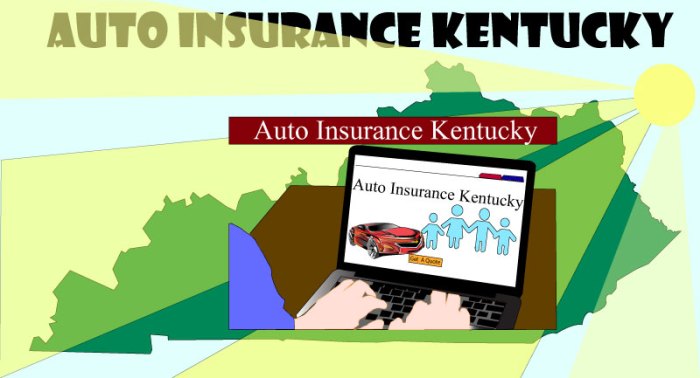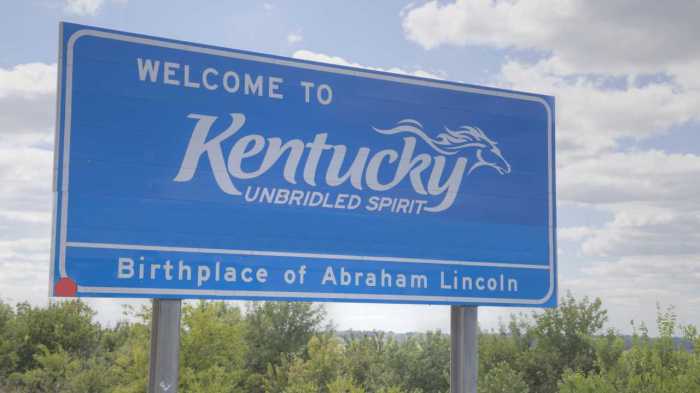Securing the right auto insurance in Kentucky is crucial for responsible drivers. This guide delves into the complexities of Kentucky’s insurance landscape, providing clarity on minimum coverage requirements, available coverage types, and factors influencing premiums. We’ll explore strategies for finding affordable insurance, understanding claims processes, and navigating Kentucky’s specific insurance laws and regulations. Whether you’re a seasoned driver or a new Kentucky resident, this comprehensive resource aims to empower you with the knowledge needed to make informed decisions about your auto insurance.
Understanding Kentucky’s auto insurance regulations is paramount for protecting yourself financially and legally. This guide provides a detailed overview of the state’s minimum coverage requirements, the various types of coverage available, and the factors that impact your insurance rates. We also explore practical tips for securing affordable coverage, navigating the claims process, and utilizing available resources. By the end, you’ll have a solid grasp of Kentucky’s auto insurance system and the tools to make informed choices.
Kentucky’s Minimum Auto Insurance Requirements

Driving in Kentucky requires you to carry a minimum amount of auto insurance to protect yourself and others. Failure to do so can result in significant penalties. This section details Kentucky’s minimum insurance requirements, compares them to neighboring states, and provides examples of coverage costs.
Minimum Liability Coverage Amounts
Kentucky mandates minimum liability coverage for bodily injury and property damage. This means you must have insurance that covers the costs if you cause an accident resulting in injury or property damage to others. The minimum requirements are $25,000 for bodily injury to one person, $50,000 for bodily injury to multiple people in a single accident, and $25,000 for property damage. This is often expressed as 25/50/25 liability coverage. It’s crucial to understand that this is the *minimum*; higher coverage amounts are strongly recommended to protect yourself financially in the event of a serious accident.
Penalties for Driving Without Minimum Insurance
Driving in Kentucky without the minimum required auto insurance is illegal. Penalties can be severe and include significant fines, suspension of your driver’s license, and even the impoundment of your vehicle. The exact penalties can vary depending on the circumstances and the number of offenses, but they are substantial enough to make carrying the minimum insurance a necessity. Furthermore, if you are involved in an accident without insurance, you could be held personally liable for all damages, which could lead to financial ruin.
Comparison to Neighboring States
Kentucky’s minimum insurance requirements are relatively low compared to some neighboring states. For instance, some states like Illinois or Ohio may have higher minimum liability limits. A direct comparison requires referencing each state’s individual laws, but it highlights the importance of understanding your own state’s requirements and considering whether your current coverage is adequate. It is advisable to review the insurance laws of any state you plan to drive in.
Sample Coverage Levels and Costs
The cost of auto insurance varies significantly based on several factors, including your driving record, age, location, the type of vehicle, and the coverage level you choose. The following table provides a *sample* of potential coverage levels and their associated costs. These are estimates and your actual costs may differ.
| Coverage Level | Bodily Injury | Property Damage | Estimated Monthly Cost* |
|---|---|---|---|
| Minimum (25/50/25) | $25,000/$50,000 | $25,000 | $50 – $100 |
| Higher Liability (100/300/100) | $100,000/$300,000 | $100,000 | $75 – $150 |
| Comprehensive & Collision | Varies | Varies | $100 – $250+ |
*Estimated monthly costs are for illustrative purposes only and will vary widely based on individual circumstances.
Factors Affecting Auto Insurance Rates in Kentucky

Securing affordable auto insurance in Kentucky involves understanding the various factors that influence your premium. Several key elements contribute to the final cost, and being aware of these can help you make informed decisions to potentially lower your rates. This section details the major factors impacting your Kentucky auto insurance premiums.
Driving Record
Your driving history significantly impacts your insurance rates. A clean driving record, free from accidents and violations, will generally result in lower premiums. Conversely, accidents and traffic violations, particularly serious ones like DUIs or reckless driving, will substantially increase your rates. The severity and frequency of incidents directly correlate with higher premiums. For example, a single speeding ticket might result in a modest increase, while a DUI conviction could lead to a much more significant rate hike or even policy cancellation. Insurance companies use a points system to assess risk based on your driving record. More points mean higher premiums.
Age
Age is another critical factor. Younger drivers, particularly those under 25, typically pay higher premiums due to statistically higher accident rates in this demographic. Insurance companies perceive this group as higher risk. As drivers age and gain experience, their premiums generally decrease, reflecting a lower likelihood of accidents. This trend continues until a certain age, after which premiums may again slightly increase due to potential health concerns affecting driving ability.
Location
Where you live in Kentucky influences your insurance rates. Areas with higher crime rates, more traffic congestion, and a greater frequency of accidents generally have higher insurance premiums. This is because insurance companies assess the risk of claims being filed in different geographical locations. Living in a rural area with fewer cars and lower accident rates might result in lower premiums compared to living in a densely populated urban center.
Vehicle Type
The type of vehicle you drive also affects your insurance costs. Sports cars and other high-performance vehicles are often more expensive to insure due to their higher repair costs and greater potential for accidents. Conversely, smaller, less expensive vehicles usually have lower insurance premiums. Factors like the vehicle’s safety rating and theft risk also play a role in determining insurance costs. A vehicle with advanced safety features might qualify for a discount.
Credit Score
In Kentucky, as in many other states, your credit score can influence your auto insurance rates. While the practice is controversial, insurance companies often use credit-based insurance scores to assess risk. A good credit score generally translates to lower premiums, reflecting a perceived lower risk of claims. Conversely, a poor credit score may result in higher premiums. It’s important to note that this is not a direct measure of driving ability but rather a broader assessment of financial responsibility.
Impact of Different Driving Violations
Different driving violations have varying impacts on insurance costs. Minor violations, such as a single speeding ticket, may result in a relatively small premium increase. However, more serious violations, such as reckless driving or driving under the influence (DUI), can lead to significantly higher premiums or even policy cancellation. A DUI conviction, for instance, can dramatically increase your insurance costs for several years. Multiple violations within a short period will compound the impact, leading to even higher rates.
Demographic Factors and Insurance Pricing
A bar chart illustrating the average annual premiums for different demographic groups in Kentucky would visually represent the impact of these factors. (Note: This bar chart is a description, as image creation is outside the scope of this response). The chart would have the demographic groups (e.g., age groups: 16-25, 26-35, 36-45, 46-55, 55+), along the horizontal axis and the average annual premium on the vertical axis. Each bar would represent a specific demographic group, with the height of the bar indicating the average annual premium for that group. For example, the bar representing the 16-25 age group would likely be significantly taller than the bars representing older age groups, reflecting the higher premiums typically associated with younger drivers. Similarly, bars representing different geographic locations or vehicle types could be included to further illustrate the influence of these factors on insurance costs. The chart would visually demonstrate how various demographic factors contribute to the disparity in auto insurance premiums across different segments of the Kentucky population.
Closing Notes

Successfully navigating the world of auto insurance in Kentucky requires a clear understanding of the state’s regulations, available coverage options, and the factors that influence premiums. This guide has provided a comprehensive overview, equipping you with the knowledge to compare policies, negotiate rates, and effectively manage your insurance needs. Remember to regularly review your coverage to ensure it aligns with your evolving circumstances and always prioritize safe driving practices to minimize risks and maintain affordable premiums. By proactively managing your auto insurance, you can protect yourself and your assets on Kentucky’s roads.
Question & Answer Hub
What happens if I’m in an accident and the other driver is uninsured?
In Kentucky, uninsured/underinsured motorist (UM/UIM) coverage protects you if you’re involved in an accident with an uninsured or underinsured driver. This coverage will help pay for your medical bills and vehicle repairs.
How often can I expect my insurance rates to change?
Insurance rates can change periodically, often annually. Factors like driving record changes, claims filed, or changes in your vehicle can trigger adjustments.
Can I get my insurance cancelled for minor violations?
While a single minor violation might not lead to immediate cancellation, repeated offenses or serious violations can result in policy cancellation or significantly higher premiums.
What documents do I need to file a claim?
Typically, you’ll need police reports, photos of the accident scene and damage, contact information of all involved parties, and your insurance policy information.